Electrospinning Evolution Derived from TRIZ Theory for Directly Writing Patterned Nanofibers
Abstract
1. Introduction
2. ES Evolution Based on TRIZ Theory
2.1. Problem Analysis of ES
- (1)
- Identification element: The model element can be identified by splitting the high-voltage electrostatic spinning system shown in Figure 1. Substances: S2—spinning solution; S1—positively charged (+) filament in formation; S1′—positively charged (+) filament in formation. Field: F1—high voltage electric field; F1′—interaction field between electric charges, here shown as repulsion.
- (2)
- (1)
- The positive charge in the spinning solution, S2, moves directionally under the action of the high-pressure electric field, F1, forming a positively charged fiber, S1 (the effectively complete model).
- (2)
- Under the interaction force, F1′, between charges, S1 in the fiber being formed has a repulsive effect on S1′ of the fiber being formed with a positive charge (the harmful integrity model), which makes it difficult for the final NF S1′ to form a good morphology.
2.2. Problem Solving
- (1)
- F2 is used to offset the harmful effect;
- (2)
- An improved S1 or/and S2 is introduced to eliminate the harmful effect;
- (3)
- S3 is introduced to eliminate harmful effects;
- (4)
- Harmful effects are eliminated;
- (5)
- The magnetic influence is cut off.
- Identification element. The model components can be identified when the system shown in Figure 4 is broken down. Materials: S2—spinning solution; S1—positively charged (+) filament being formed; S1′—positively charged (+) filament being formed; S4—negatively charged electron beam; S3—negatively charged receiving plate. Fields: F1—high voltage electric field; F1′—mutual repulsion between positive charges; F2—mutual attraction between positive and negative charges.
- 2.
- Build the model. Based on the organic combination of substances and fields, a complete substance–field model is constructed, as shown in Figure 5.
- (1)
- The positive charge in the spinning solution, S2, moves directionally under the action of the high-pressure electric field, F1, forming a positively charged fiber, S1, in the formation process;
- (2)
- Under the interaction force, F1′, between charges, the formed fiber, S1′, has a repulsive effect on the formed fiber with a positive charge, S1′;
- (3)
- The negatively charged electron, S4, is attached to the receiving board through the mechanical field, F3, making the receiving board, S3, negatively charged (-);
- (4)
- The electric field, F2, attracted by the dissimilar charges acts on the formed and positively charged fiber, S1′, through the negatively charged receiving plate, S3, thus canceling the repulsive effect of S1 on S1′.
- (1)
- Identification element. Substances: S2—spinning solution with positive charge; S2′—spinning solution with negative charge; S1—fiber formed with positive charge (+); S1′—formed fiber with positive charge (+); S1″—improved fiber with negative charge (-); S3—disk base; S4—receiving plate. Fields: F1—positive high-voltage electric field; F1′—mutual repulsion between positive charges; F1″—negative high-voltage electric field; F2—mechanical field.
- (2)
- Build the model. Based on the organic combination of substances and fields, a complete matter–field model can be constructed, as shown in Figure 6.
- (1)
- The positive charge in the spinning solution, S2, moves directionally under the action of the positive high-voltage electric field, F1, forming a positively charged fiber, S1, in the formation process. Note that this section of fiber forms on the receiving plate, S4, and becomes the positively charged fiber, S1′, that was already formed;
- (2)
- The disk base, S3, causes the receiving plate, S4, to rotate 180° through the mechanical field, F2, of the motor, making the receiving plate, S4, face the spinning solution, S2′, under a negative charge;
- (3)
- The negative charge in the spinning solution, S2′, moves directionally under the action of the negative high-pressure electric field, F1″, forming a negatively charged fiber, S1″. The repulsion of F1′ is eliminated by the improved S1″, and S1″ falls on S4 after forming;
- (4)
- S3 causes S4 to rotate 180° in the opposite direction again so that S4 faces S2 with a positive charge. This cycle keeps repeating itself, spinning fibers that have no charge.
2.3. Device Improvement of ES
- (1)
- What is the ultimate purpose of the design?
- (2)
- What is the IFR?
- (3)
- What are the barriers to achieving the IFR?
- (4)
- What is the result of this problem?
- (5)
- What are the conditions for the absence of this problem?
- (6)
- What are the resources available to create these conditions?
- (1)
- Define the technical conflict. Eliminate the repulsive effect of electric field force between the fibers being formed and the fibers already formed; “repulsive force” is the parameter to be improved. In both of the above designs, there are structures that could not be added, and extra power is even needed, which creates useless work for the system and consumes energy; therefore, the deterioration parameter is “waste of energy”.
- (2)
- Query the conflict matrix. “Repulsive force” corresponds to the general technical parameter “10—force”; “waste of energy” corresponds to the general engineering parameter “22—energy loss”. After querying the TRIZ theory conflict matrix table, two recommended invention principles were obtained: 14 (curved) and 15 (dynamic characteristics).
- (3)
- Apply the invention principle. In combination with the IFR, a solution was proposed: Principle 15 (dynamic characteristics) was selected to adjust the performance of an object or environment to achieve an optimal state in all stages of work. The DC power was changed to a low-frequency AC power supply, and the operation mode of the object that belongs to the system was adjusted so that a single current was passed to the polymer from the variable alternating current power supply (AC power). In the spinning process, a periodic change in current provides alternating intervals of dissimilar charges for the fibers, and they neutralize each other, thus eliminating or weakening the repulsive effect and obtaining a patterned fiber film with a consistent thickness. The optimized solution not only cancels the repulsive force but also solves the problem of worsening technical conflict: there is no extra structure or device added to the system, reducing the energy loss. The improved device is shown in Figure 8. The AC frequency can be adjusted based on the controllability of the equipment and the specific spinning situation, generally set to 1–5 Hz. The AC frequency not only improves the controllability of the equipment but also matches the spinning frequency.
3. Experiment
3.1. Materials and Methods
3.2. Results and Discussion
4. Conclusions
Author Contributions
Funding
Institutional Review Board Statement
Data Availability Statement
Conflicts of Interest
References
- Xue, J.; Wu, T.; Dai, Y.; Xia, Y. Electrospinning and Electrospun Nanofibers: Methods, Materials, and Applications. Chem. Rev. 2019, 119, 5298–5415. [Google Scholar] [CrossRef] [PubMed]
- Yan, T.; Wu, Y.; Pan, Z. Anisotropy of resistance-type strain sensing networks based on aligned carbon nanofiber membrane. J. Mater. Sci. 2021, 56, 6292–6305. [Google Scholar] [CrossRef]
- Formhals, A. Process and Apparatus for Preparing Artificial Threads. U.S. Patent US50028330A, 2 October 1934. [Google Scholar]
- Ding, J.X.; Zhang, J.; Li, J.N.; Li, D.; Xiao, C.; Xiao, H.; Yang, H.; Zhuang, X.; Chen, X. Electrospun polymer biomaterials. Prog. Polym. Sci. 2019, 90, 1–34. [Google Scholar] [CrossRef]
- Islam, M.S.; Ang, B.C.; Andriyana, A.; Afifi, A.M. A review on fabrication of nanofibers via electrospinning and their applications. SN Appl. Sci. 2019, 1, 1248. [Google Scholar] [CrossRef]
- Kenry, C.T.L. Nanofiber technology: Current status and emerging developments. Prog. Polym. Sci. 2017, 70, 1–17. [Google Scholar] [CrossRef]
- Tong, H.W.; Wang, M. A novel technique for the fabrication of 3D nanofibrous scaffolds using simultaneous positive voltage ES and negative voltage electrospinning. Mater. Lett. 2013, 94, 116–120. [Google Scholar] [CrossRef]
- Sun, B.; Long, Y.Z.; Yu, F.; Li, M.M.; Zhang, H.D.; Li, W.J.; Xu, T.X. Self-assembly of a three-dimensional fibrous polymer sponge by electrospinning. Nanoscale 2012, 4, 2134–2137. [Google Scholar] [CrossRef]
- Li, Y.; Li, W.Q. Method to Creative Design; Science Press: Beijing, China, 2013. (In Chinese) [Google Scholar]
- Stepanyan, R.; Subbotin, A.V.; Cuperus, L.; Boonen, P.; Dorschu, M.; Oosterlinck, F.; Bulters, M.J. Nanofiber diameter in electrospinning of polymer solutions: Model and experiment. Polymer 2016, 97, 428–439. [Google Scholar] [CrossRef]
- He, X.X.; Zheng, J.; Yu, G.F.; You, M.H.; Yu, M.; Ning, X.; Long, Y.Z. Near-field electrospinning: Progress and applications. J. Phys. Chem. C 2017, 121, 8663–8678. [Google Scholar] [CrossRef]
- Deshawar, D.; Chokshi, P. Stability analysis of an electrospinning jet of polymeric fluids. Polymer 2017, 121, 34–49. [Google Scholar] [CrossRef]
- Andreas, G.; Wendorff, J.H. Electrospinning: A fascinating method for the preparation of ultrathin fibers. Angew. Chem. Int. Ed. 2007, 46, 5670–5703. [Google Scholar]
- Cheng, J.; Jun, Y.; Qin, J.; Lee, S.H. Electrospinning versus microfluidic spinning of functional fibers for biomedical applications. Biomaterials 2017, 114, 121–143. [Google Scholar] [CrossRef] [PubMed]
- Zhao, S.; Zhou, Q.; Long, Y.Z.; Sun, G.H.; Zhang, Y. Nanofibrous patterns by direct electrospinning of nanofibers onto topographically structured non-conductive substrates. Nanoscale 2013, 5, 4993–5000. [Google Scholar] [CrossRef]
- Chen, Y.; Zhao, M.; Xie, Y.; Zhang, Z. A new model of conceptual design based on Scientific Ontology and intentionality theory. Part II: The process model. Des. Stud. 2015, 38, 139–160. [Google Scholar] [CrossRef]
- Feng, P.E.; Chen, Y.; Zhang, S.; Pang, S. Conceptual design based on product genetics. Chin. J. Mech. Eng. 2002, 38, 1–6. [Google Scholar] [CrossRef]
- Li, W.Q.; Li, Y.; Wang, J.; Liu, X. The process model to aid innovation of products conceptual design. Expert Syst. Appl. 2010, 37, 3574–3587. [Google Scholar] [CrossRef]
- Zheng, H.; Feng, Y.X.; Gao, Y.C.; Tan, J. The solving process of conceptual design for complex product based on performance evolution. Chin. J. Mech. Eng. 2018, 54, 214–223. [Google Scholar] [CrossRef]
- Liu, X.M.; Tan, R.H.; Yao, L.G. Application research on integrated process model for the conceptual design of product innovation. Chin. J. Mech. Eng. 2008, 44, 154–162. [Google Scholar] [CrossRef]
- Dorst, K.; Cross, N. Creativity in the design process: Co-evolution of problem-solution. Des. Stud. 2001, 22, 425–437. [Google Scholar] [CrossRef]
- Qian, H.; Li, Y.; Tao, Y.; Liu, H. Triple-helix structured model based on problem-knowledge-solution co-evolution for innovative product design process. Chin. J. Mech. Eng. 2020, 33, 94. [Google Scholar]
- Wang, P.; Su, J.N.; Hu, C.B.; Zhang, S.T. Research on Product Identity Design Based on Kansei Image in Mechanic Equipment. Adv. Mater. Res. 2013, 651, 569–574. [Google Scholar] [CrossRef]
- Gero, J.S.; Kannengiesser, U. The situated function–behaviour–structure framework. Des. Stud. 2004, 25, 373–391. [Google Scholar] [CrossRef]
- Jiang, S.H.; Chen, Y.M.; Duan, G.; Mei, C.; Greiner, A.; Agarwal, S. Electrospun nanofiber reinforced composites: A review. Polym. Chem. 2018, 9, 2685–2720. [Google Scholar] [CrossRef]
- Yi, F.; Wang, X.; Niu, S.; Li, S.; Yin, Y.; Dai, K.; Zhang, G.; Lin, L.; Wen, Z.; Guo, H.; et al. A highly shape-adaptive, stretchable design based on conductive liquid for energy harvesting and self-powered biomechanical monitoring. Sci. Adv. 2016, 2, e1501624. [Google Scholar] [CrossRef]
- Kim, K.; Dean, D.; Mikos, A.G.; Fisher, J.P. Effect of Initial Cell Seeding Density on Early Osteogenic Signal Expression of Rat Bone Marrow Stromal Cells Cultured on Cross-Linked Poly (propylene fumarate) Disks. Biomacromolecules 2009, 10, 1810–1817. [Google Scholar] [CrossRef]
- Vitale, A.; Massaglia, G.; Chiodoni, A.; Bongiovanni, R.; Pirri, C.F.; Quaglio, M. Tuning Porosity and Functionality of Electrospun Rubber Nanofiber Mats by Photo-Crosslinking. ACS Appl. Mater. Interfaces 2019, 11, 24544–24551. [Google Scholar] [CrossRef]
- Liu, Q.J.; Wu, Q.; Xie, S.Z.; Zhao, L.; Chen, Z.; Ding, Z.; Li, X. Uniform field electrospinning for 3D printing of fibrous configurations as strain sensors. Nanotechnology 2019, 30, 375301. [Google Scholar] [CrossRef]
- Tripatanasuwan, S.; Zhong, Z.; Reneker, D.H. Effect of evaporation and solidification of the charged jet in electrospinning of poly(ethylene oxide) aqueous solution. Polymer 2007, 48, 5742–5746. [Google Scholar] [CrossRef]

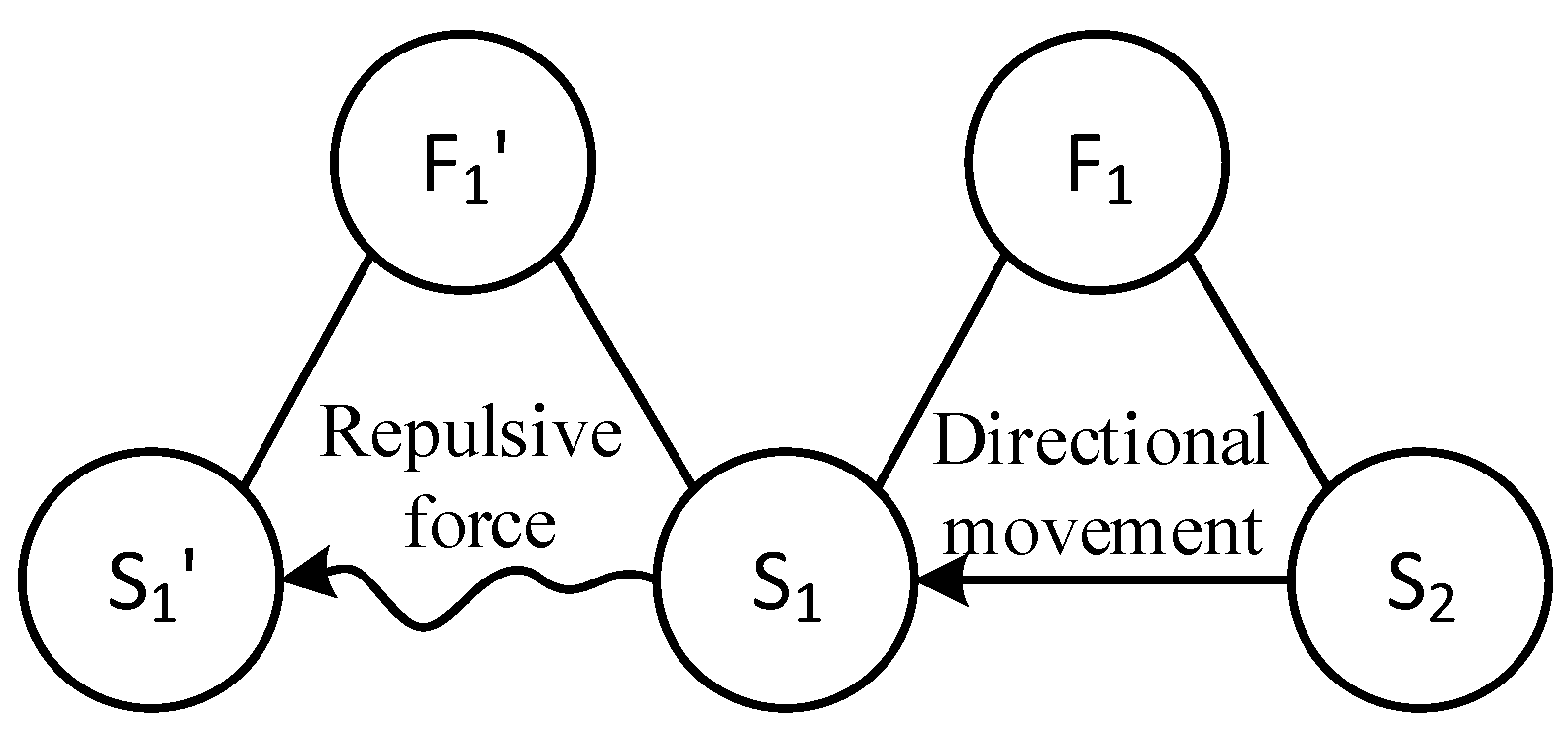

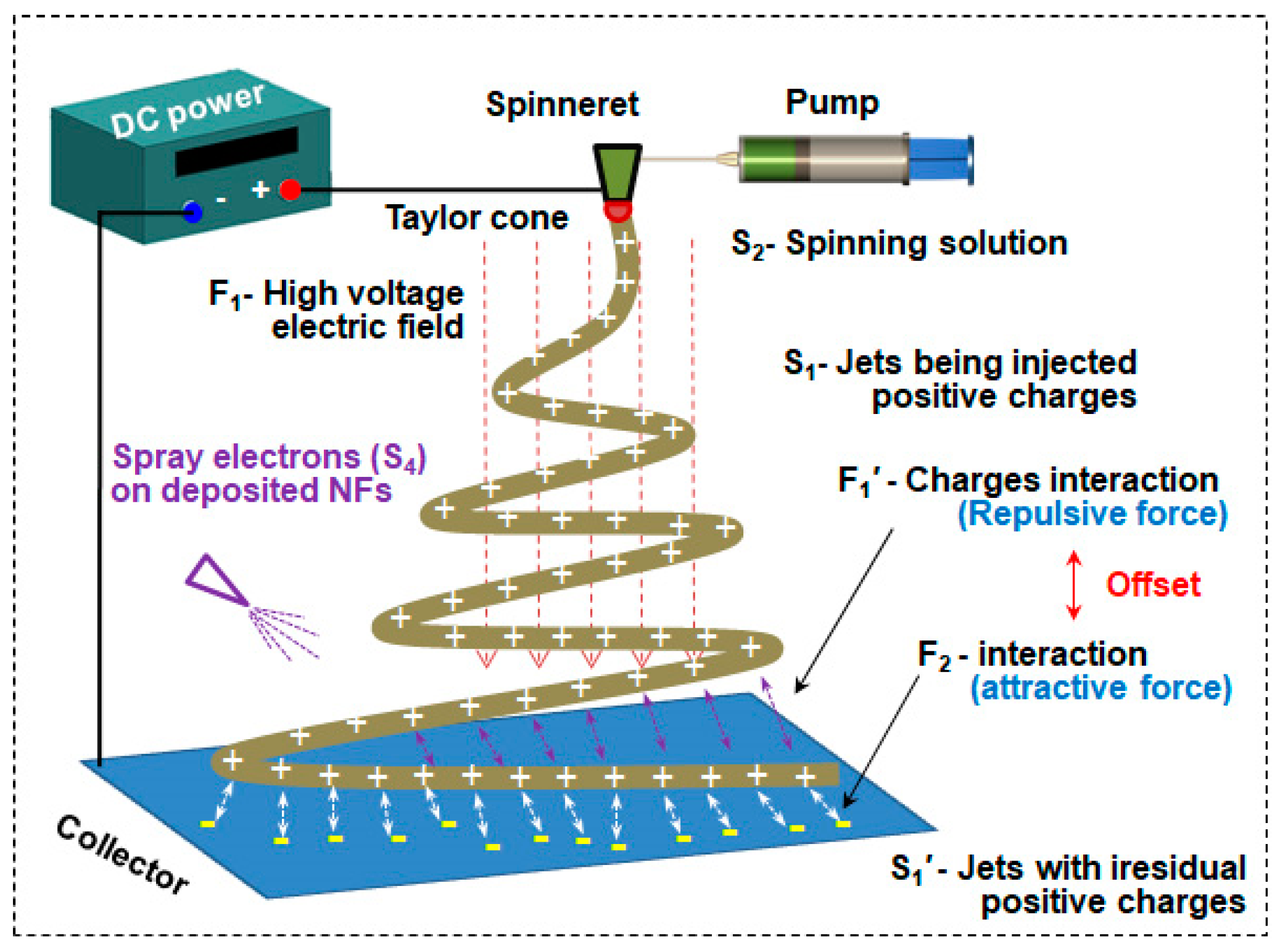
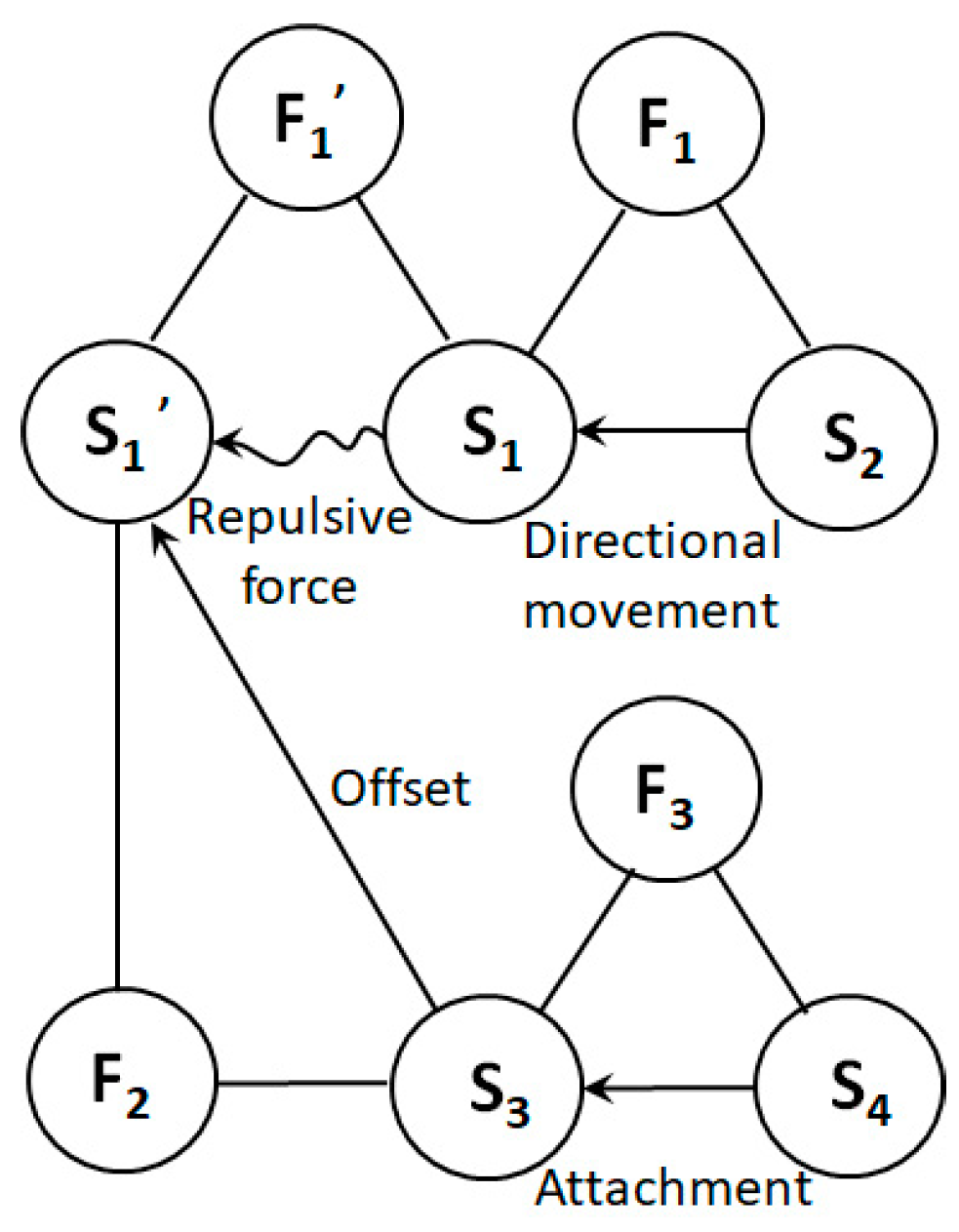
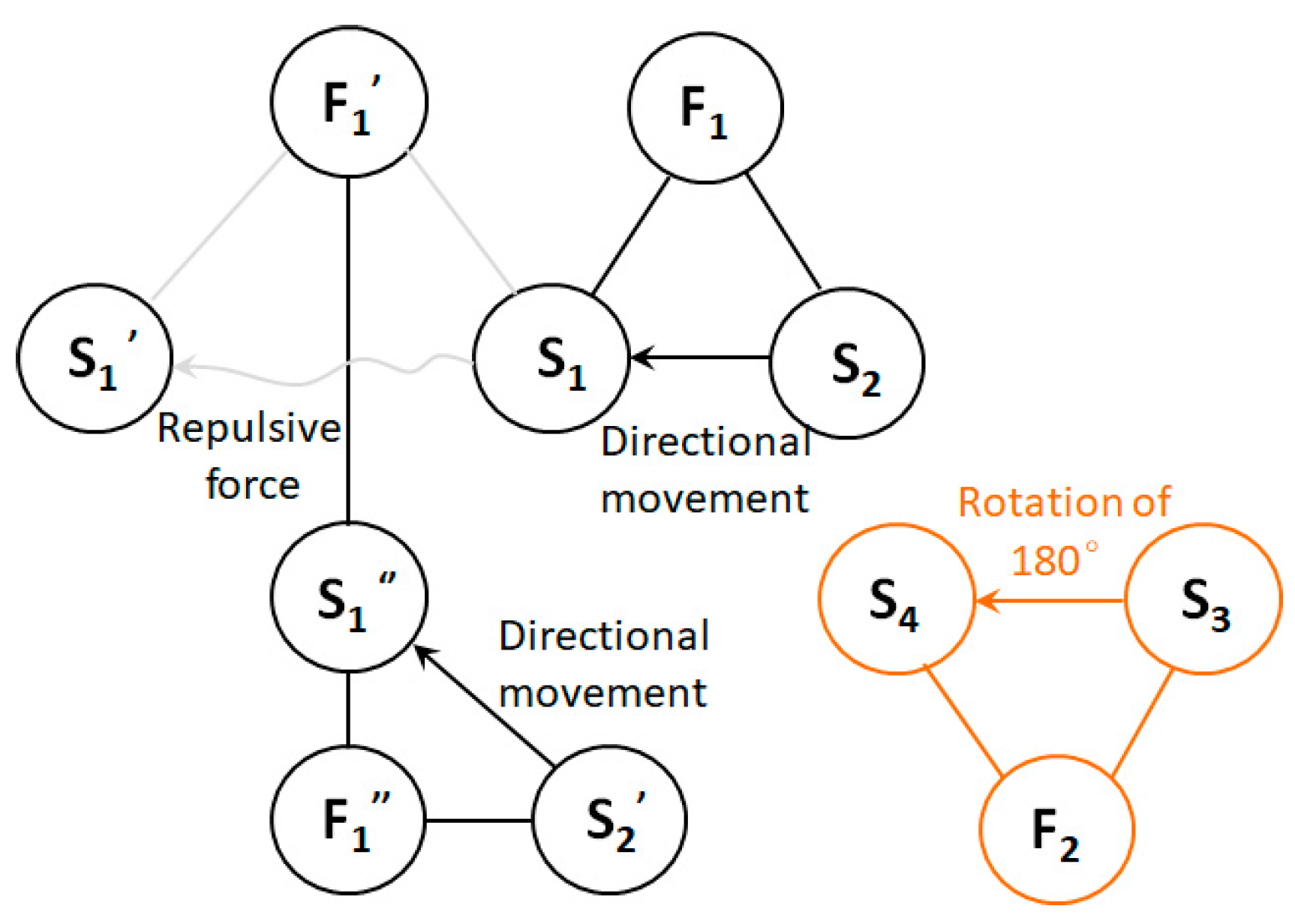
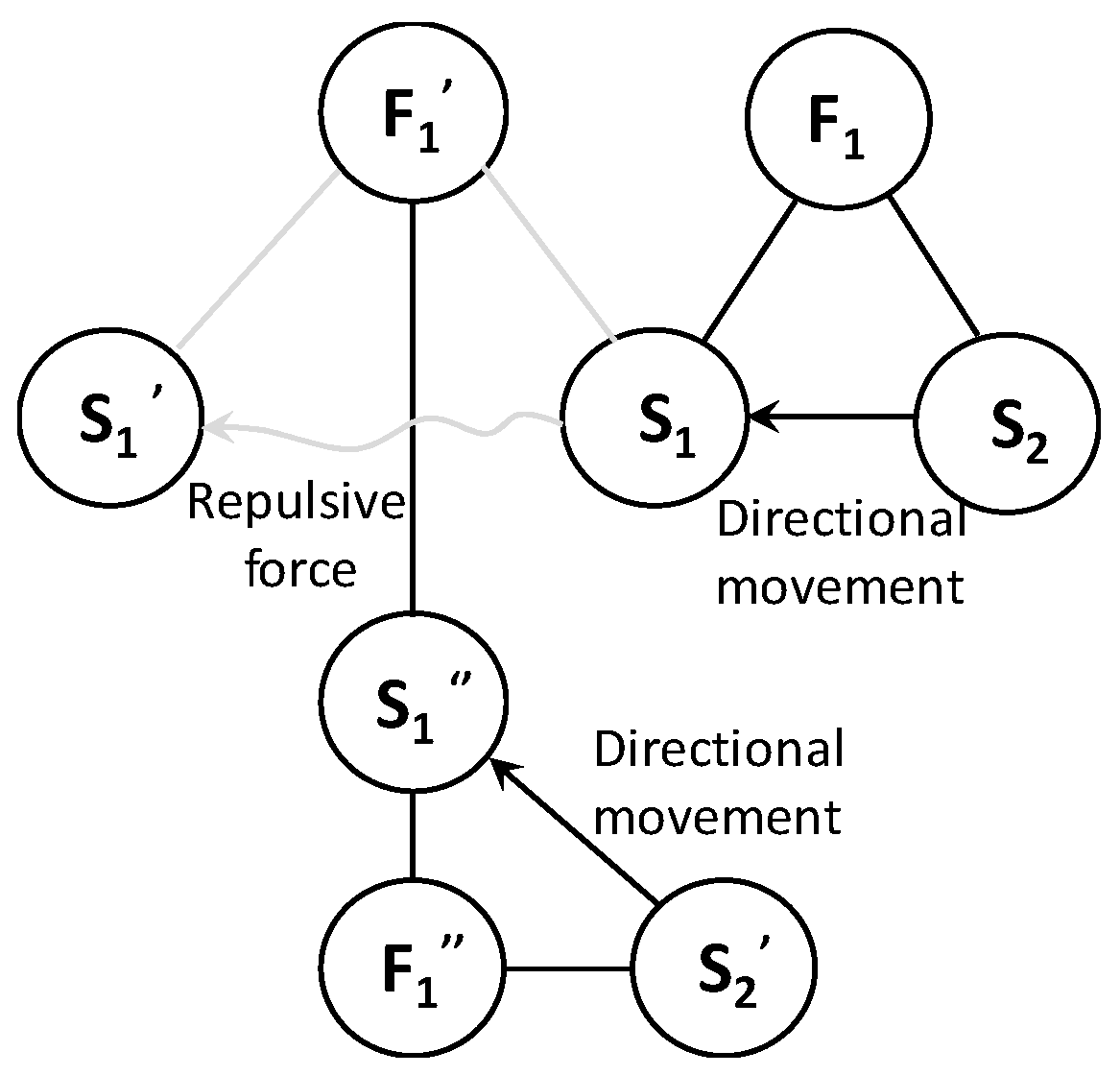

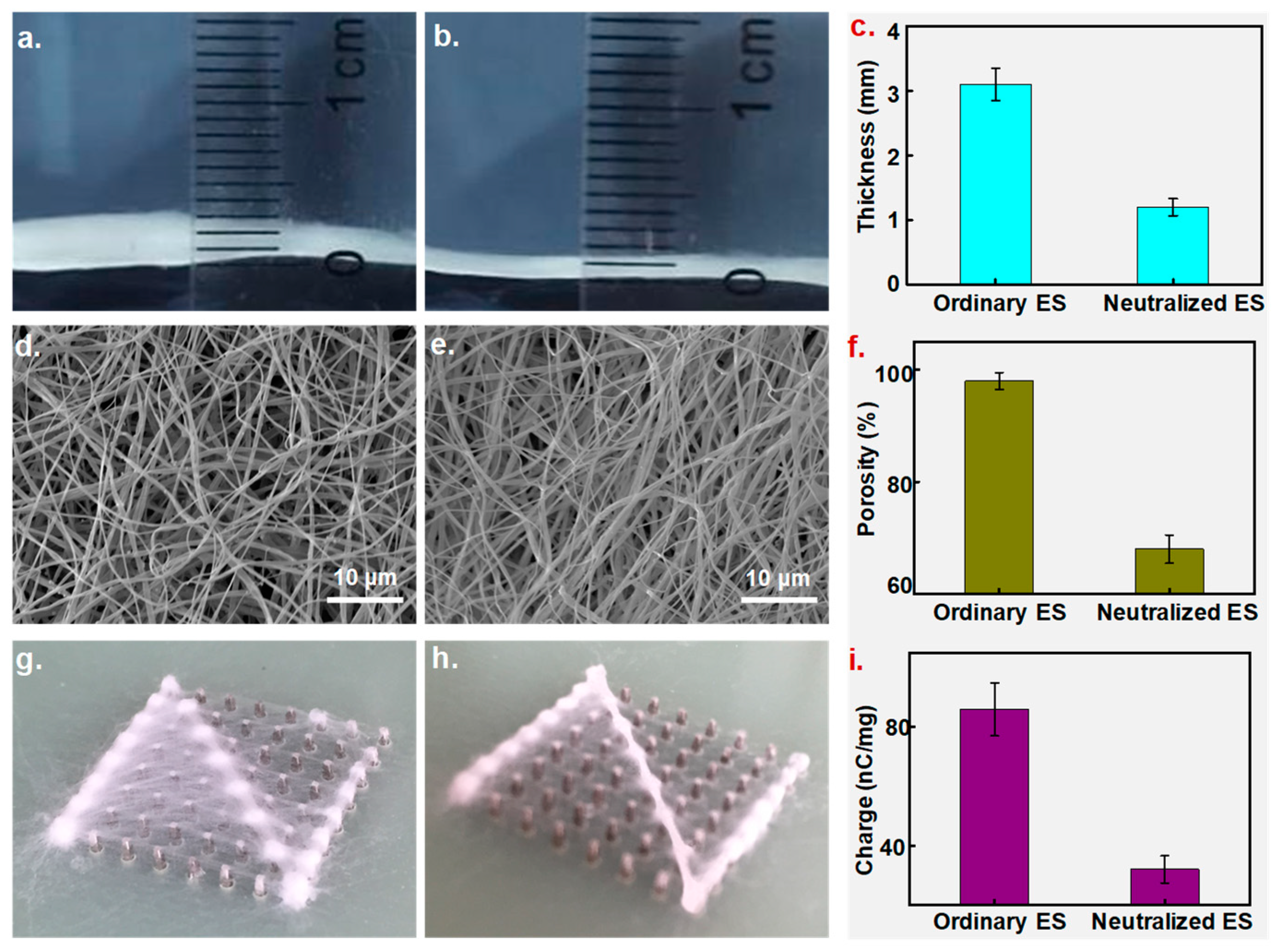
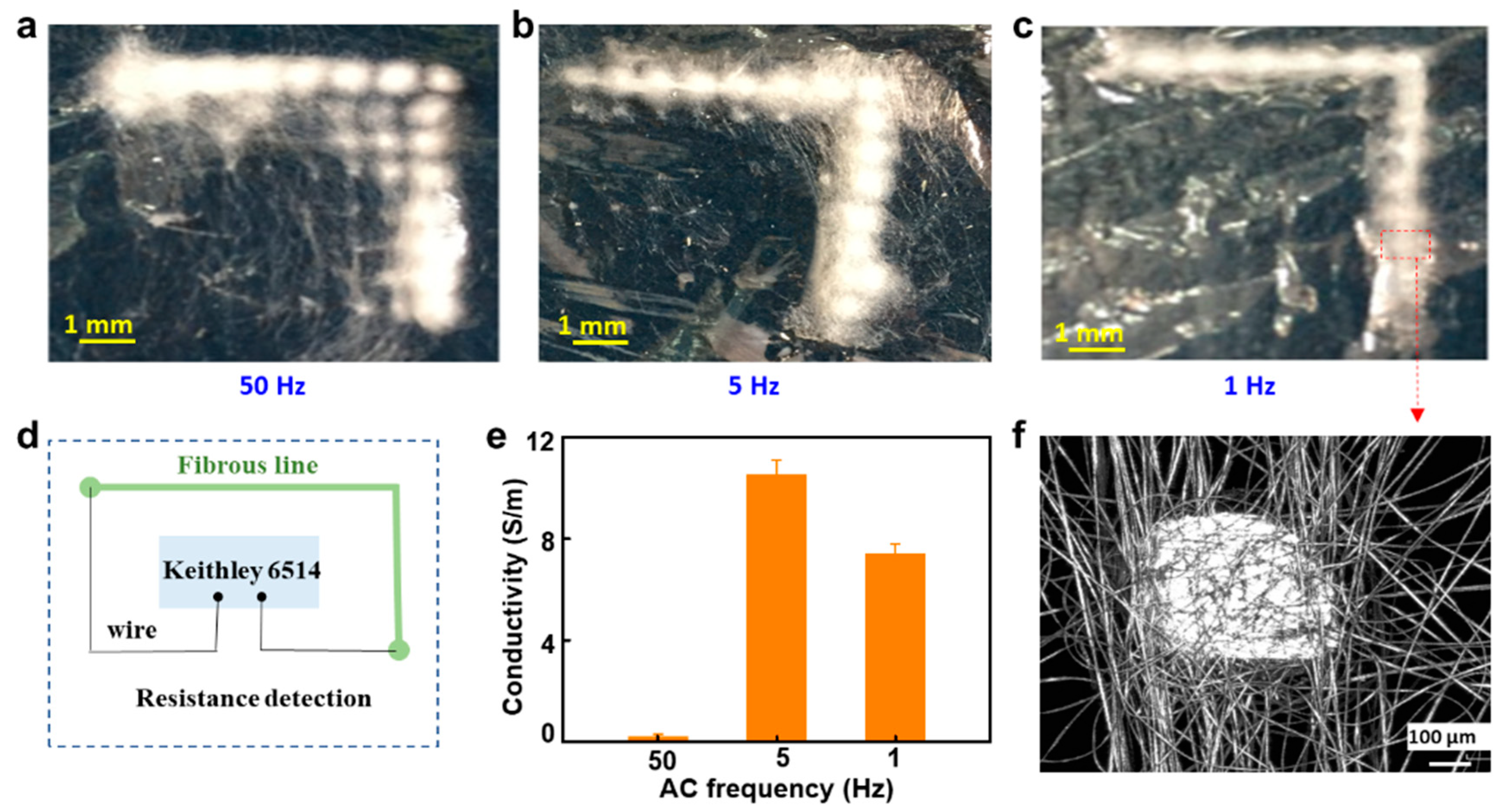
Disclaimer/Publisher’s Note: The statements, opinions and data contained in all publications are solely those of the individual author(s) and contributor(s) and not of MDPI and/or the editor(s). MDPI and/or the editor(s) disclaim responsibility for any injury to people or property resulting from any ideas, methods, instructions or products referred to in the content. |
© 2023 by the authors. Licensee MDPI, Basel, Switzerland. This article is an open access article distributed under the terms and conditions of the Creative Commons Attribution (CC BY) license (https://creativecommons.org/licenses/by/4.0/).
Share and Cite
Wu, Y.; Liu, Z.; Wu, H.; Zhang, K.; Liu, Q. Electrospinning Evolution Derived from TRIZ Theory for Directly Writing Patterned Nanofibers. Polymers 2023, 15, 3091. https://doi.org/10.3390/polym15143091
Wu Y, Liu Z, Wu H, Zhang K, Liu Q. Electrospinning Evolution Derived from TRIZ Theory for Directly Writing Patterned Nanofibers. Polymers. 2023; 15(14):3091. https://doi.org/10.3390/polym15143091
Chicago/Turabian StyleWu, Yuchao, Zhanghong Liu, Hongtao Wu, Kai Zhang, and Qingjie Liu. 2023. "Electrospinning Evolution Derived from TRIZ Theory for Directly Writing Patterned Nanofibers" Polymers 15, no. 14: 3091. https://doi.org/10.3390/polym15143091
APA StyleWu, Y., Liu, Z., Wu, H., Zhang, K., & Liu, Q. (2023). Electrospinning Evolution Derived from TRIZ Theory for Directly Writing Patterned Nanofibers. Polymers, 15(14), 3091. https://doi.org/10.3390/polym15143091





